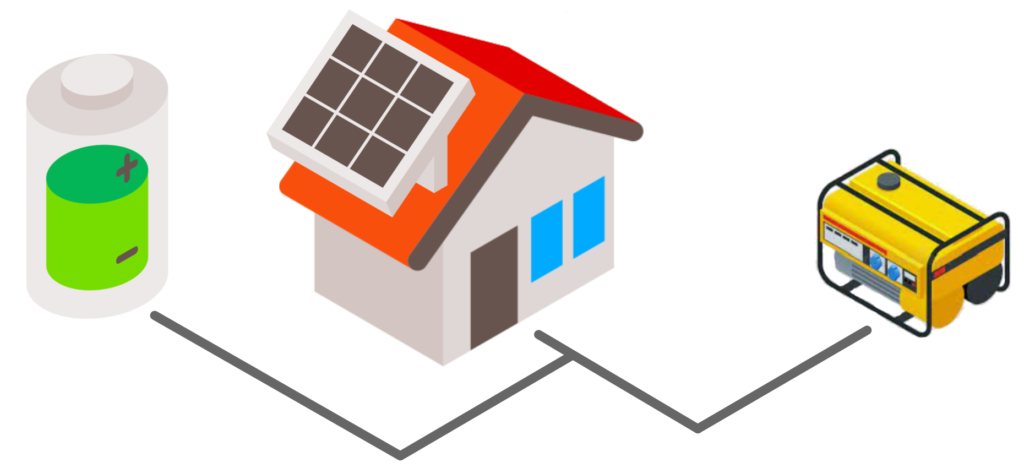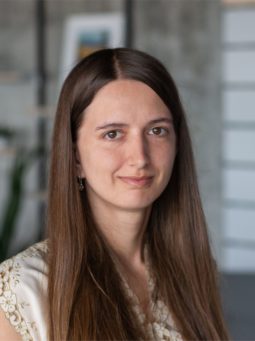What's
Intelligent energy flow control in microgrids
Artificial intelligence and smart solutions are now appearing in almost every industry – and the energy sector is no exception. Our team, which is focusing on data analytics and green energy at the Kempelen Institute for Intelligent Technologies, is intensively involved in research in this area. We are using an example of intelligent control of energy flow in a local distribution network (a microgrid), to manifest the positive benefits of the application of smart methods in the energy sector. A microgrid can help with reducing the dependence on the use of fossil fuel generators.
Renewable energy sources are already becoming the standard practice
The deployment of renewable electricity sources is making significant progress. Lower equipment prices and government subsidies are also playing a role. In towns and cities, it is common for homes to be equipped with electricity-generating devices such as photovoltaic (PV) panels. This phenomenon is visible not only in densely populated areas, but also in harder-to-reach places where the connection to the public electricity grid is difficult or even impossible to implement. As the production of renewable energy is highly dependent on the weather, these devices are often installed together with large-capacity batteries or fossil fuel generators that can replace them in times of insufficient energy production. Unfortunately, fuel generators are not environmentally friendly – they pollute the air and they are very noisy. So how can we reduce their usage without sacrificing the convenience of being connected to electricity?
Sharing energy in microgrids
Sharing cars, bicycles and accommodation is already very common. However, there are also efforts to share strategic commodities such as electricity. This is possible thanks to the new concept of the energy network. In this new concept, there are not only traditional energy consumers, but also network participants that produce energy as well as consume it. The energy produced can be shared between nearby consumers and producers.
Linking similar properties, such as cottages in a recreation area, with the aim of sharing renewable energy efficiently, has the potential to reduce the use of fuel-burning generators in the countryside. By connecting several cottages without access to the public electricity grid, we can create a so-called “Islanded microgrid”. An Islanded microgrid represents a community of energy network participants that are capable of independently managing the electricity they generate.
Microgrids can be perceived as a building block of future smart energy networks. Their main advantages are:
- increased energy self-sufficiency of microgrid participants
- the economic viability of locally produced energy
- a lower carbon footprint of its production.
For example, a microgrid connecting several cottage owners allows them to share their battery storage. By controlling the flow of electricity in the microgrid, the power generated from the photovoltaic panels can be efficiently consumed throughout the day based on the needs of the cottage residents, even though the production is highest around lunchtime.
Simulation of a cottage community in Orava
The potential for optimal control of the electricity flow in a microgrid was verified by a mathematical simulation on the example of eight cottages in Orava (Slovakia). The cottages are located several kilometers away from the village and are not connected to the public grid. They are inhabited only a few days a year. During their stay, the residents use electricity for lighting, to use the radio or to power their refrigerators. In the long-term, they use it to run the alarm system or the remote-controlled electric heating.

The aim of the simulation was to achieve an optimal distribution of electricity between the cottages, considering the occupancy of the cottages, the long-term operation of the remote-controlled appliances and the weather forecast. Instead of running a fuel generator, the simulation preferred to use the battery power of the nearest cottage that did not currently need it and could obtain the battery power from renewable sources until the next visit of its owners.
The simulation was implemented using MATLAB Simulink. To optimize the energy flow, we successively used three different methods: linear programming, linear programming with constraints, and particle swarm optimization. All methods optimized the energy fluxes to the closest hour, and the optimization proceeded chronologically in time.
The first method took into account only the actual consumption of the cottage inhabitants and the production of photovoltaic panels. The second method was extended by the residents’ presence plan, which was used to determine batteries that were not being used at the moment. The third method also included the meteorological data to get an idea of the future photovoltaic panel production and the future level of battery charge in the individual huts. In contrast to the previous two methods, the third one was able to optimize the energy flow in a longer period of time – the next six hours. The output of all three methods was the amount of energy each hut needed to draw from the other cottages in the next hour and a sign indicating whether the hut should be running a fuel generator. In the case of the second and third methods, there was also an indication of whether the battery in that hut was accessible to the others or whether it was reserved for the owners of the hut.
Taking into consideration the evaluation and comparison of the methods, we first simulated the initial stage without power flow optimization and then compared with the results for the optimized flows. The microgrid simulation was running for a four-week period. The simulation showed that if the cottages were occupied only three to seven days a month, after the optimization, the fuel generators were not needed at all. When simulating huts with an occupancy of six to nine days per month, the optimization was able to reduce the use of the fuel generators to about a quarter of their original running time. When taking meteorological data and hut occupancy information into account and applying the particle swarm optimization method, the reduction of the fuel generators use was even more significant – to a tenth of the original time.
In real life, the results of the optimization would largely depend on the accuracy of the input data on planned residents’ presence, their expected consumption, and the weather which is used to predict the energy production of photovoltaic panels. In the simulation, we assumed that the owners announced their arrival at least 12 hours in advance.
Artificial intelligence and machine learning in the energy sector
This positive example motivates us to explore and develop new intelligent solutions in the energy sector. The long-term growth of the renewable sources in the electricity grid also reinforces the importance of micro-grids in the public electricity network.
The ability to consume as much energy as possible at the place where it is produced will be even more important with a higher share of renewable energy sources. This is because the surplus of unconsumed electricity supplied to the main grid can have a negative impact on its stability. At the same time, new challenges such as energy sharing and trading between microgrid participants or even between several microgrids and the main grid might arise. The new concepts of flexibility and flexibility aggregator will also play an important role in the upcoming years.
At KInIT, we have been dedicated to data analytics and intelligent solutions for several years. We have accomplished diverse tasks related to the use of sensor measurements not only in the energy industry, but also in smart buildings and cities. Some examples include the prediction of electricity consumption, office occupancy, generating of renewable energy, consumption disaggregation, anomaly detection, or customer segmentation. KInIT cooperates with several partners in this field such as ZSE Energia, sféra, a. s., or SOFTEC. More information about our collaborations can be found here.
Thank you to Ing. Adrián Kubica, who significantly contributed to this solution proposal.
The article was originally published in the October issue of ATP Journal. You can read it in Slovak here.


